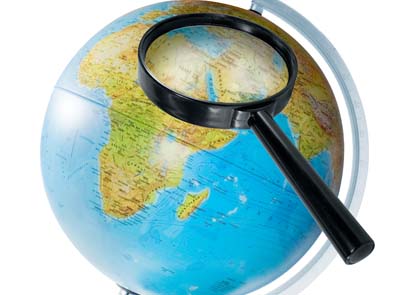South Africa’s economy could grow by an additional 0,17%, ending up $770-million larger within 10 years, if it were to join the Information Technology Agreement–an international pact eliminating tariffs on hundreds of information and communications technology (ICT) products.
This is according to a new economic analysis by the Information Technology and Innovation Foundation (ITIF). ITIF, a global tech-policy think tank, which also found that South Africa would raise new tax revenue, recovering 92% of the government’s lost tariff revenue in the 10th year–making this a win-win economic policy.
“Increasing the use of technology in all sectors of the economy is one of the most important drivers of economic growth in developing countries because it enhances productivity, spurs innovation, and bolsters living standards,” says Stephen Ezell, ITIF’s vice-president and the report’s lead author.
“If South Africa joins the Information Technology Agreement, its businesses and consumers will use more technology products because of lower prices, while becoming more deeply integrated in global value chains for ICT production. This will spur significant economic growth for the country while generating new tax revenues that substantially offset tariff losses.”
Established in 1996, the Information Technology Agreement (ITA) eliminates tariffs on hundreds of ICT products for its 82 signatory countries. Despite its economic benefits, some developing nations have yet to join because their governments are concerned about the loss of operating income from forgone tariffs.
Disproving this false narrative, ITIF analyzed how the increase in ICT imports and lower prices due to tariff elimination under the ITA would spur greater economic growth and tax revenue in six developing countries – Argentina, Cambodia, Chile, Kenya, Pakistan and South Africa.
Major findings include:
* Joining the ITA would bolster Argentina’s economic growth by an estimated 1,52%, or $12,7-billion in additional output, in the 10th year; Cambodia’s by 0,98% or $320-million; Chile’s by 0,23% or $920-million; Kenya’s by 1,29% or $1,4-billion; Pakistan’s by 1,30% or $4,6-billion; and South Africa’s by 0,17% or $770-million.
* Chile and South Africa realize lower, yet still positive, economic impact, because these countries already have relatively low tariff rates on ITA-covered ICT products.
* In the 10th year after joining the ITA, new tax revenues would allow Argentina to recover 133% of forgone tariff revenues ($1,3-billion); Cambodia 23% ($24-million); Chile 67% ($94-million), Kenya 109% ($139-million); Pakistan 75% ($231-million); and South Africa 92% ($152-million).
* ITA accession matters not just to companies in a country’s ICT goods- and services-producing sectors, but to all enterprises and industries that leverage ICTs and use them to digitize their businesses and operations.
“Countries that haven’t joined the ITA are missing a significant opportunity for economic growth, innovation, and prosperity,” says Ezell. “Joining the ITA makes countries more attractive locations for ICT goods and services producers and exporters, and sends a strong signal that these countries are open for business.”

